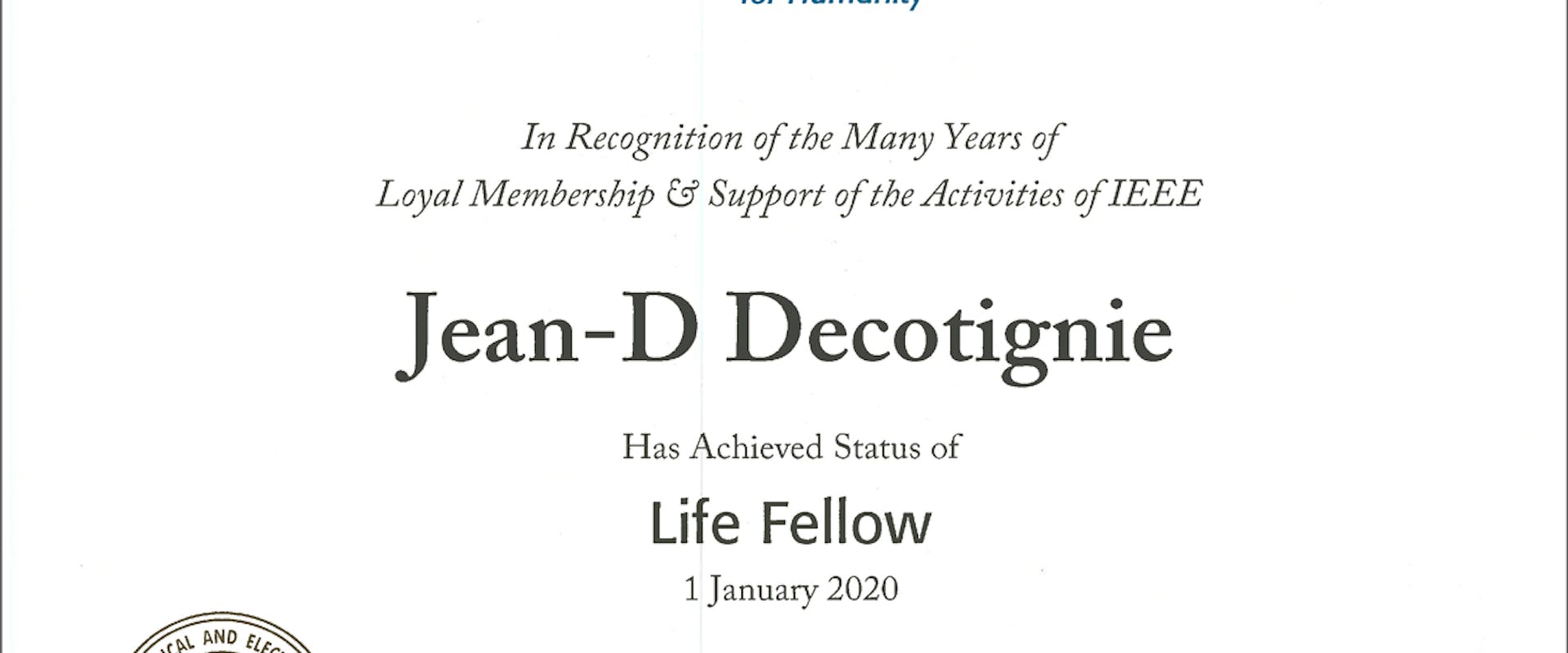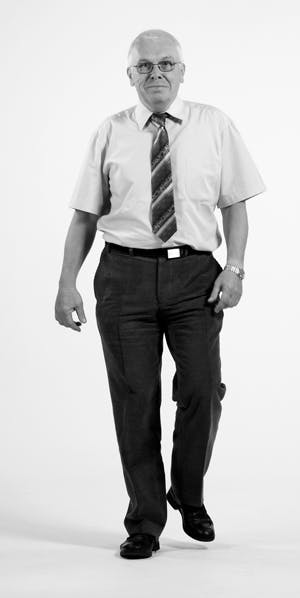2020 IEEE Lifetime Member to Jean-Do Decotignie
A quick google search around Jean-Dominique Decotignie (or Jean-Do as he is affectionately known) and you will quickly find a wealth of research, awards, and distinctions awarded to this outstanding member of the scientific community. Now, Jean-Dominique has been awarded one of the most distinguished recognitions from the IEEE, a Life membership (LM), proof of his strong and sustained commitment to developing real-time wireless sensor networks with an emphasis on safety-critical applications.

A quick chat with Jean-Do

Congratulations! What a wonderful feeling it must have been to receive this news through the post! It’s never easy to summarize a lifetime of work in a few questions, but what were your very first research interests?
I started out as an electrical engineer – more interested in theory than by practice. I was interested in electromagnetism particularly in the higher frequencies referred to as microwaves and their propagation in waveguides. I was very lucky to get a scholarship to spend a year at the University of Tokyo, one of the most prestigious Japanese universities. I started my Ph.D. whilst there, moving towards higher frequencies and studying propagation in optical fibers/integrated optics which were both hot topics at the time.
What was the first project you ever worked on and in which context was it used?
Back when I first started out microwaves were mostly used in military applications and communications. During my first project, I was in charge of building a system that could distinguish between potatoes and mud clods, to help automatize potato harvesting. We demonstrated its feasibility but, to my knowledge, the system was never implemented in practice.
From your very first interests to becoming a pioneer of Fieldbus technology, for which you were awarded the IEEE fellowship, what would you say is the most significant change you have seen in the field of wireless sensor networks?
The most significant change has been the shift from transmission on cables to wireless, which occurred in the late 90s. There were a few challenges to meet incuding: integrating the high-frequency electronics on a single circuit; drastically reducing energy consumption; building protocols that can run on simple processors while providing security; robustness; low latency and minimal duty cycle. It took some time but we made it, and CSEM is very well positioned in this subject both in terms of academic research and industrial practice.
How were you were first connected with the IEEE? Now after receiving your LM to the IEEE, could you describe what you think is in store in the future for wireless networks? What do see as being the next important state-of-the-art research issue (or technology) in this field?
At the end of my engineering studies, my professor pushed me to publish a paper with the results of my diploma work and submit it to an IEEE student contest. For this, I had to apply as a student member of the organization – I have been a member ever since!
In terms of the next research issue, for various good and less admirable reasons, most proposed technologies tend to favor information flows from end-users to large organizations. Wireless technologies such as 5G follow this trend providing technologies that are complex technical jewels that can only be mastered by large companies; whose objective is to make profits by creating new markets or enlarging existing ones with little concern about the common good. Simpler wireless technologies should be made more widely available to citizens or groups of citizens that may invent a more useful and democratic use of the technology, for better living or to help save our planet.
You may now be retired, but we are sure you are still keenly interested in what is happening in the field. In your opinion, what has been the most impressive result published around wireless networks this past year?
5G technology is currently in the headlines. I admire the engineers that are able to create cell phones that implement this technology, which requires complex and powerful processing and can still operate a few tens of hours on battery power. However, the most impressive progress is in the area of ultra-low-power communications, particularly backscatter technology. Rather than generating waves, low-power nodes reflect incoming waves in a clever manner. This is the same principle as high-frequency RFID (Radio Frequency Identification), which has been used for quite a while. Where it differs and is new is that the same principle is proposed for creating Bluetooth or even WiFi compliant nodes that can be operated with considerably less energy than classical nodes.
Lastly, as an IEEE LM what would be your advice to a new Ph.D. student who wants to start a career in wireless networks?
There are still plenty of opportunities in wireless networking from hardware to software including protocols and security. My impression is that the key to advancing in this world is a combination of hardware and software. CSEM is ideally placed for that. Thinking differently is and has always been, a second key ingredient, trying for instance to look at problems from different angles including those that most people claim impossible. The good thing about new Ph.D. students is that they do not know the limits and try routes that most senior researchers believe are impossible – and sometimes, they succeed!